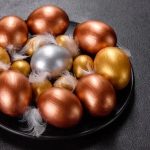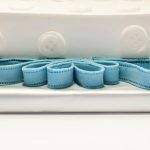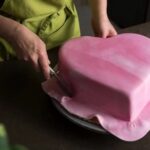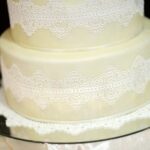Are you looking to add a touch of sweetness and elegance to your cakes? Learn how to make icing sugar to decorate cake with ease. Icing sugar, also known as powdered sugar or confectioners’ sugar, plays a crucial role in creating beautiful designs on cakes. From simple dusting to intricate piping, icing sugar offers versatility in enhancing the overall appearance of any baked creation.
Icing sugar is made from finely ground granulated sugar mixed with cornstarch, making it ideal for decorating cakes due to its smooth texture and ability to easily dissolve in liquids. This essential ingredient can be used in various forms such as royal icing, buttercream frosting, or simple glazes. Its powdery consistency allows for precise control when decorating, whether you’re looking to cover a cake smoothly or create intricate patterns.
When it comes to icing sugar, there are different types available in the market such as organic, gluten-free, or flavored options. However, making your own icing sugar at home not only ensures quality but also allows for customization according to your preferences. By understanding the benefits of making your own icing sugar, you can take your cake decorating skills to the next level and create personalized sweet treats that will impress any guest.
What Is Icing Sugar
Icing sugar, also known as powdered sugar or confectioner’s sugar, is a key ingredient in cake decoration due to its fine texture and the ability to easily dissolve into various icings and frostings. It plays a crucial role in providing sweetness and smoothness to frostings, while also helping to achieve that perfect velvety finish on cakes.
Making your own icing sugar at home can not only save you money but also give you control over the quality of the final product.
To make icing sugar at home, all you need is granulated sugar and some cornstarch. Simply blend the granulated sugar in a food processor until it becomes a fine powder-like consistency. Adding cornstarch helps prevent clumping and ensures a smoother texture. You can adjust the ratio of cornstarch based on your preference for thickness in the icing sugar. This homemade version works just as well as store-bought icing sugar and can be used in various cake decorating techniques.
By making your own icing sugar, you have the flexibility to customize it according to your taste preferences. You can add flavor extracts such as vanilla or almond for an extra dimension of taste or use natural food coloring to create vibrant colored icings for decorating cakes. Experimenting with different ingredients can elevate your cake decorating skills and allow you to create visually stunning designs that are sure to impress any crowd.
| Ingredients | Role in Cake Decorating |
|---|---|
| Granulated Sugar | Main component that provides sweetness and smooth texture |
| Cornstarch | Prevents clumping, adds thickness, and ensures a velvety finish |
Different Types of Icing Sugar
Icing sugar, also known as powdered sugar or confectioner’s sugar, plays a crucial role in cake decorating. It is a versatile ingredient that can be used to create smooth frostings, intricate designs, and even add a touch of sweetness to baked goods. When it comes to decorating cakes, having the right type of icing sugar can make all the difference in achieving the desired look and taste.
There are several types of icing sugar available in the market, each with its unique characteristics and uses in cake decorating. One common type is the traditional powdered sugar, which is finely ground granulated sugar mixed with a small amount of cornstarch.
This type of icing sugar is ideal for making frosting, glazes, and dusting cakes with a smooth finish. Another type is icing or superfine sugar, which has an ultra-fine texture that dissolves easily and smoothly into frostings and fillings.
For those looking for alternatives to traditional icing sugar, there are options like organic powdered sugar made from certified organic ingredients or natural sweeteners like stevia or monk fruit. These alternatives can cater to specific dietary preferences or restrictions while still providing the same sweetening and decorating capabilities as regular icing sugar. Experimenting with different types of icing sugars can also add new flavors and textures to your cake decorations.
In summary, understanding the different types of icing sugar available in the market can help you choose the right one for your cake decorating needs. Whether you prefer the traditional powdered sugar for classic frosting recipes or want to explore alternative options for specific dietary requirements, having knowledge about the varieties of icing sugars will enhance your skills in creating beautiful and delicious cakes.
| Types of Icing Sugar | Uses |
|---|---|
| Traditional Powdered Sugar | Frosting, Glazes, Dusting Cakes |
| Icing or Superfine Sugar | Frostings, Fillings |
| Organic Powdered Sugar | Caters to Dietary Preferences |
Benefits of Making Your Own Icing Sugar
Making your own icing sugar at home can have a multitude of benefits compared to buying pre-made ones from the store. Not only is it cost-effective, but it also allows you to have full control over the ingredients used, ensuring a healthier option for your cake decorations. By making your own icing sugar, you can customize the sweetness level and texture according to your preference, resulting in a more personalized touch to your baked goods.
Control Over Ingredients
When you make your own icing sugar at home, you have complete control over what goes into it. Many store-bought icing sugars may contain additives or unnecessary ingredients that you may want to avoid. By creating your own icing sugar, you can choose organic or high-quality ingredients, leading to a healthier option for decorating cakes and other baked treats.
Freshness and Flavor
One of the main advantages of making your own icing sugar is the freshness it provides to your baked goods. Store-bought options may not always be as fresh as homemade ones, which can impact the flavor and overall quality of your cake decorations. By making icing sugar from scratch, you ensure that it is freshly made and adds a delicious taste to your desserts. Additionally, homemade icing sugar tends to have a richer flavor compared to store-bought alternatives.
Tools Needed for Making Icing Sugar
When it comes to making icing sugar from scratch to decorate cakes, having the right tools is essential to ensure a smooth and successful process. Without the proper equipment, you may encounter difficulties in achieving the desired consistency and texture of the icing sugar. Here is a list of essential tools needed for making icing sugar at home and using it to decorate cakes:
Blender or Food Processor
One of the key tools needed for making icing sugar is a blender or food processor. These appliances are crucial for grinding granulated sugar into a fine powder. Make sure your blender or food processor is clean and dry before use to avoid any contamination.
Sieve or Fine Mesh Strainer
To achieve a smooth and lump-free icing sugar, a sieve or fine mesh strainer is necessary. This tool helps in removing any lumps or large particles from the powdered sugar, resulting in a silky texture that is perfect for decorating cakes.
Airtight Container
Once you have made your own icing sugar, storing it properly is important to maintain its freshness and quality. An airtight container will help keep moisture out and preserve the powdered sugar for future use in decorating cakes.
By having these essential tools on hand, you can confidently make your own icing sugar at home and use it to create beautiful decorations on your cakes. With the right equipment, you can easily customize the texture and flavor of your icing sugar to suit your specific cake decorating needs.
Step-by-Step Guide to Making Icing Sugar
Icing sugar, also known as powdered sugar or confectioner’s sugar, is a crucial ingredient in cake decorating. It is used to make icing, frosting, and fondant for cakes, cupcakes, and other baked goods. Making your own icing sugar at home gives you control over the quality and texture of the final product. By following a simple recipe and using the right tools, you can easily create beautiful designs and decorations for your desserts.
To make icing sugar at home, all you need is granulated sugar and cornstarch. The cornstarch helps to prevent clumping and ensures a smooth consistency in the icing sugar. Simply blend together one cup of granulated sugar with one tablespoon of cornstarch in a blender or food processor until it reaches a fine powdery texture. You may need to sift the mixture to remove any lumps for a smoother result.
One of the key benefits of making your own icing sugar is that you can customize it to suit your preferences. You can adjust the sweetness level by adding more or less sugar, or incorporate different flavors like vanilla or cocoa powder for a unique twist.
Homemade icing sugar is also free from additives and preservatives found in store-bought varieties, making it a healthier option for decorating your cakes. With this simple recipe and some creativity, you can elevate your cake decorating skills and impress your guests with beautifully decorated desserts.
Tips for Decorating Cakes With Icing Sugar
Decorating cakes with icing sugar can take your baked creations to the next level, adding a touch of elegance and sweetness to any dessert. Whether you’re a novice baker or a seasoned pro, incorporating icing sugar into your cake decorating repertoire can elevate the presentation of your sweet treats. Here are some expert tips and tricks on how to effectively use icing sugar to create stunning cake designs:
- Use stencils: Stencils are a fantastic tool for creating intricate designs on your cakes with icing sugar. Simply place the stencil over the cake and dust the icing sugar on top using a fine sieve. Carefully lift the stencil to reveal a beautifully patterned decoration.
- Embrace piping techniques: Piping is an essential skill in cake decorating, and it can be used to apply icing sugar in various patterns and shapes. Invest in different piping tips to create textures like swirls, rosettes, or even intricate lace designs on your cakes.
- Layer different colors: Mixing different colors of icing sugar can add depth and dimension to your cake decorations. Experiment with blending shades or creating ombre effects by dusting multiple layers of colored icing sugar onto your cakes.
Mastering these tips and tricks for decorating cakes with icing sugar will help you produce visually appealing desserts that are sure to impress your friends and family. From delicate floral patterns to whimsical designs, the possibilities are endless when it comes to using icing sugar as a versatile decorating tool for your cakes.
Remember, practice makes perfect, so don’t be afraid to get creative and experiment with different techniques until you find what works best for you. With patience and persistence, you’ll soon be able to confidently decorate your cakes with stunning designs using homemade icing sugar.
Creative Ideas for Using Icing Sugar
Icing sugar is a versatile ingredient that can be used in a variety of creative ways to decorate cakes, cupcakes, and other baked goods. Whether you are a beginner baker or an experienced cake decorator, incorporating icing sugar into your creations can elevate the overall look of your desserts. Here are some creative ideas to inspire you in using icing sugar to decorate your sweet treats:
- Stenciling: Stencils are a great tool to use with icing sugar to create intricate designs on top of cakes or cupcakes. Simply place the stencil on the surface of the dessert, sift icing sugar over it, and carefully lift off the stencil to reveal a beautiful pattern.
- Ombre Effect: Create a stunning ombre effect on your cakes by gradually blending different shades of icing sugar. Start by piping a thick layer of white icing at the bottom of the cake and gradually add tinted icing as you move upwards for a seamless color gradient.
- Sugar Flowers: Use icing sugar to sculpt delicate sugar flowers to adorn your cakes. Mix icing sugar with water until it forms a paste-like consistency, then mold into petals and leaves using flower cutters. Allow them to dry before arranging them on your cake for an elegant touch.
Get creative with your decorations and don’t be afraid to experiment with different techniques and designs using icing sugar. With just a little practice and some imagination, you can turn simple desserts into works of art that are sure to impress your friends and family.
Remember, making your own icing sugar at home allows you to have full control over the ingredients and ensures that your decorations are made with high-quality materials. So why not try your hand at making icing sugar from scratch for your next baking project? It’s easy, cost-effective, and most importantly, fun.
Conclusion
In conclusion, mastering the art of cake decoration with icing sugar is not only a rewarding experience but also allows for endless creativity and personalization. By understanding the ingredients needed to make icing sugar, exploring the different types available in the market, and learning how to make your own at home, you can elevate your baking skills to new heights.
One of the major benefits of making your own icing sugar is the ability to control the texture and sweetness according to your preference. Additionally, by investing in the essential tools required for making icing sugar and decorating cakes, you are setting yourself up for success in creating visually stunning desserts that are sure to impress your family and friends.
Whether you are a beginner or a seasoned baker, experimenting with icing sugar opens up a world of possibilities for creating beautiful and unique designs on cakes, cupcakes, cookies, and more. So why not take the plunge and try making your own icing sugar for your next baking project? With dedication, practice, and a sprinkle of creativity, you can turn any ordinary dessert into a masterpiece that will leave everyone craving for more.
Frequently Asked Questions
How to Make Icing Sugar for Decorating Cakes?
Making icing sugar for decorating cakes is a simple process that involves blending regular granulated sugar in a blender or food processor until it becomes powdered. This fine powder can then be used to sprinkle over cakes, cookies, or other desserts to add a decorative touch.
How to Make Your Own Icing Sugar?
To make your own icing sugar at home, all you need is regular granulated sugar and a high-speed blender or food processor. Simply pour the sugar into the blender or food processor, and blend on high until it reaches a fine powdery consistency.
Homemade icing sugar can be used in the same way as store-bought options for decorating cakes and pastries.
How Do You Decorate a Cake With Powdered Sugar?
Decorating a cake with powdered sugar is an easy way to add a touch of elegance to any dessert. To do this, place a stencil or cut-out design over the cake and gently sift powdered sugar over it using a fine-mesh sieve.
Carefully lift off the stencil to reveal the decorated pattern on top of the cake. Powdered sugar can also be used to create borders and designs by dusting it over templates placed on the cake surface before removing them carefully.

Welcome to my blog about home and family. This blog is a place where I will share my thoughts, ideas, and experiences related to these important topics. I am a stay-at-home mom with two young children. I hope you enjoy reading it! and may find some helpful tips and ideas that will make your home and family life even better!





